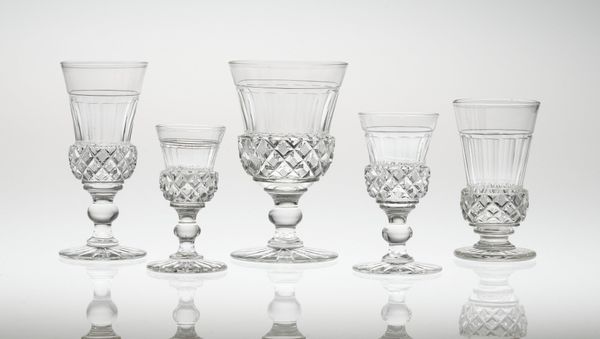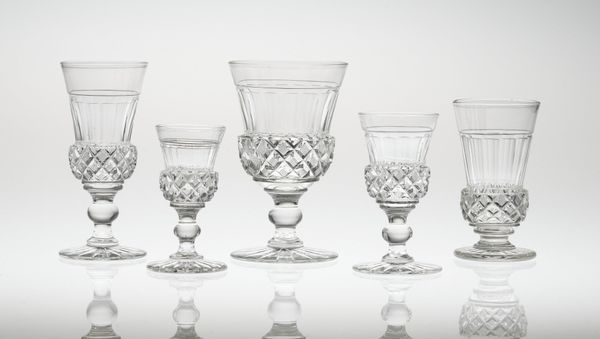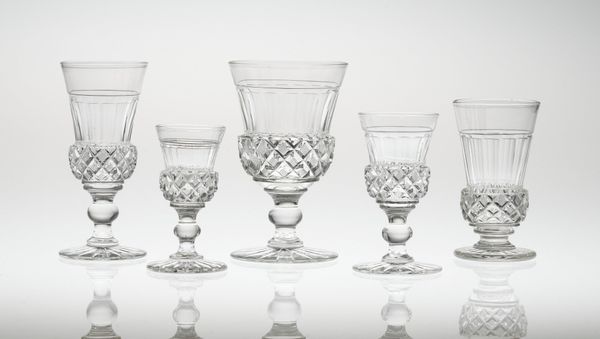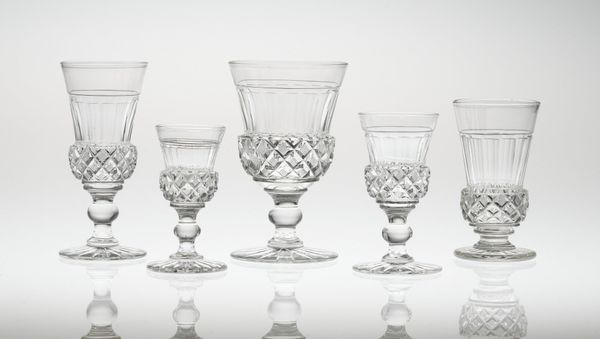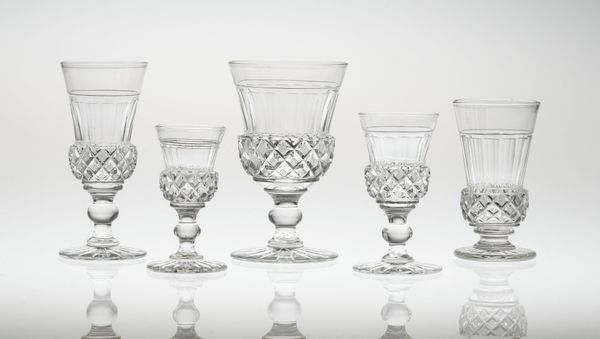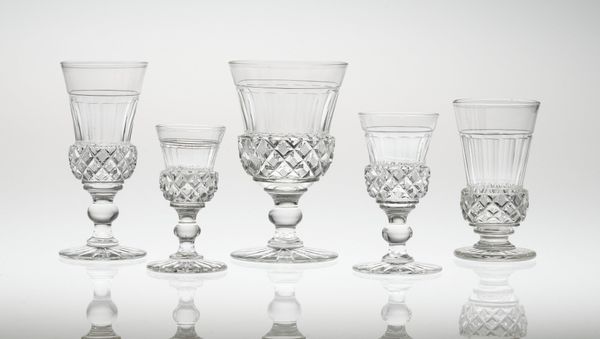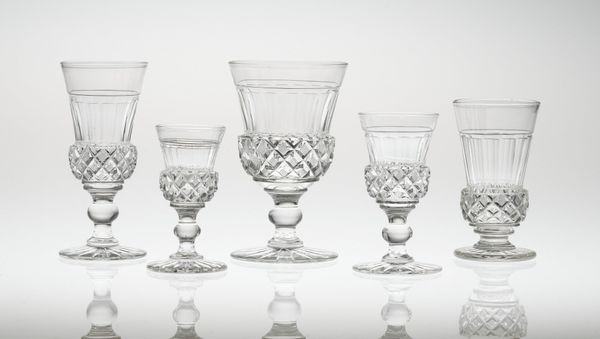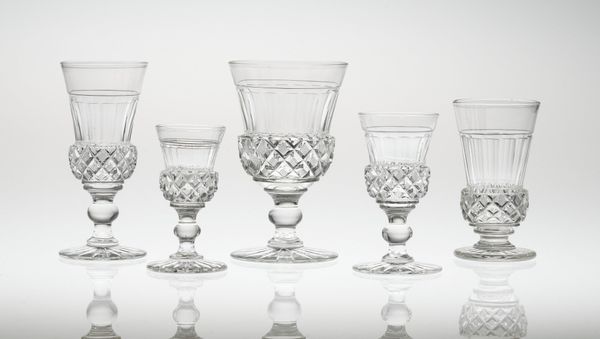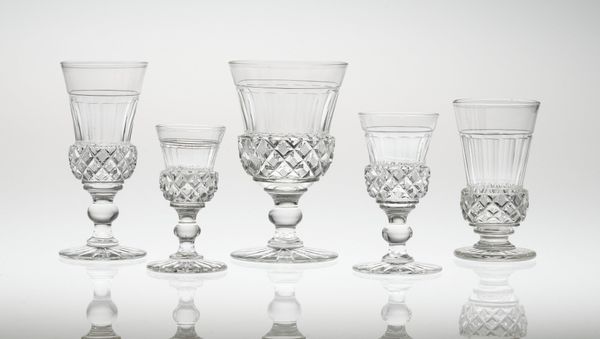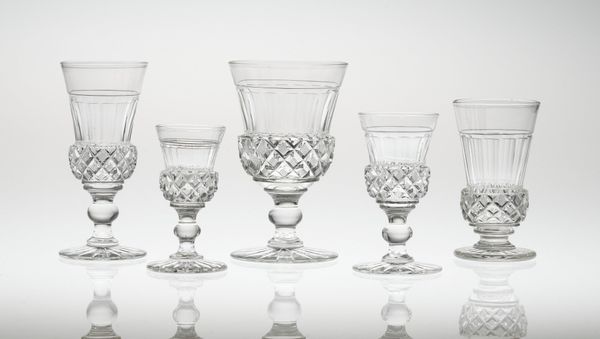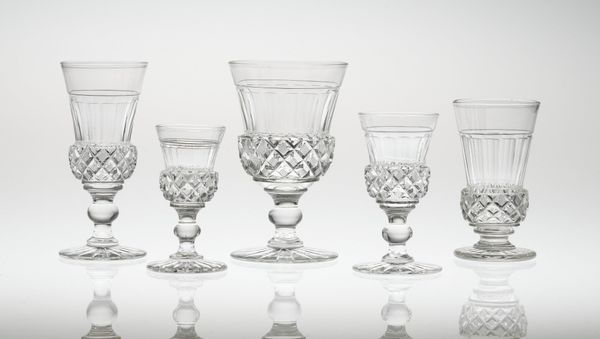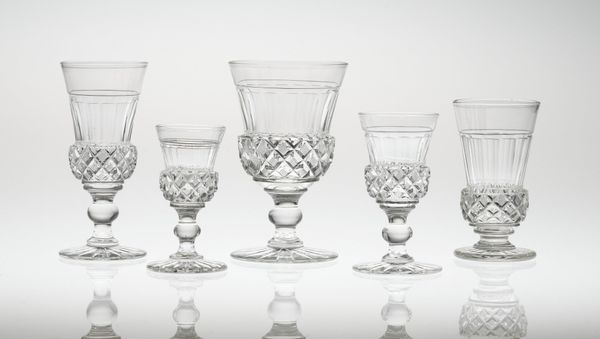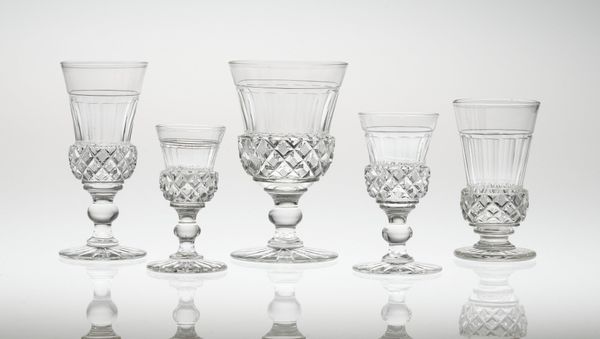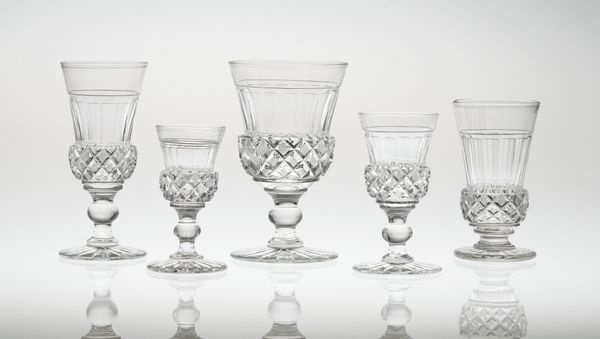
photography, glass
#
photography
#
glass
Dimensions: 4 1/8 x 2 3/8 x 2 3/8 in. (10.48 x 6.03 x 6.03 cm)
Copyright: Public Domain
Editor: Here we have a grouping of antique glassware, "Sweetmeat Glass" made around 1830. I believe the medium is glass. There's a delicacy and refinement in their design, a subtle elegance that suggests a specific social context. What can you tell us about their historical background? Curator: Well, these glasses, indeed intended for sweetmeats – candied fruits, nuts – speak volumes about the rise of a certain kind of leisure and display during the early 19th century. Consider the rise of the middle class in this period and how objects like these sweetmeat glasses became symbols of affluence and social status. It's not just about utility, it's about showing you *can* afford this, isn't it? How do you think displays of wealth through objects like this affect social relations at the time? Editor: I can see how, especially with such detailed craftsmanship, these would have been status symbols. Like advertising how cultivated and prosperous you are. Curator: Exactly. This elaborate glasswork reflects not just artistry, but also specific power structures of the time. Owning something as refined as these implied not just access to delicacies, but access to certain social circles as well, because being invited to eat these meant you belonged to their elevated social strata. Editor: That makes me consider their use-case and meaning a lot differently. Curator: I think looking at them that way it will become clear the role these glasses had on visual culture as social signaling back then. We cannot think about them in a vacuum, apart from those displays. Editor: It's amazing to see how an object, ostensibly so simple, carries so many historical and cultural implications. I see that everyday life has a history that gets recorded via objects. Curator: Precisely, every piece can tell you stories about its society.
Comments
No comments
Be the first to comment and join the conversation on the ultimate creative platform.
